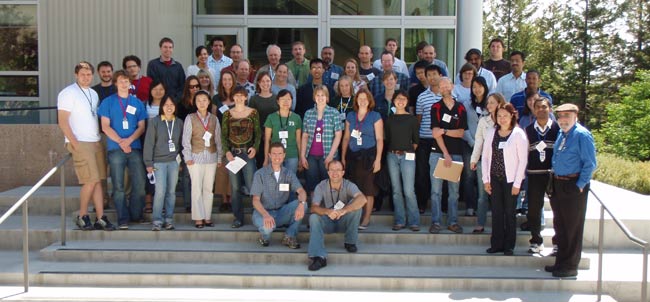

 |
 |

Overview: Modern synchrotron radiation based X-ray absorption spectroscopy (SR-XAS) techniques offer the ability to probe local molecular scale physical and electronic structures that govern key properties of technological and environmental materials and molecular complexes. The high collimation, intensity, and tunability of SR allow the investigation of a wide range of materials, including thin films and interfaces, nanoparticles, amorphous materials, solutions, hydrated and disordered bacteriogenic minerals, soils, interfaces, and dissolved species.
Good planning and a working knowledge of beam lines, in addition to techniques, are keys to conducting successful SR-XAS measurements. This third annual school on SR techniques will provide a practical users’ guide to planning and conducting XAS/EXAFS measurements at SSRL beam lines. The school will cover important basics such as basic beam line setup and optimization for fluorescence and transmission spectroscopy, as well as advanced techniques including polarized single-crystal EXAFS, grazing incidence XAS, and microprobe XAS.
We will cover topics that are not commonly addressed in text books or class lectures, but are obtained only through on-the-experiment training. Tips on sample preparation, data collection, processing and analysis will be included. The first day of the school (May 20) will be a lecture day, followed by practical days with a full hands-on day at SSRL beam lines (May 21) and a third day of data analysis and discussion (May 22). Registration is limited, so please register early. Cost will be $75.
Organizers: Sam Webb, John Bargar, Mike Toney, and Apurva Mehta